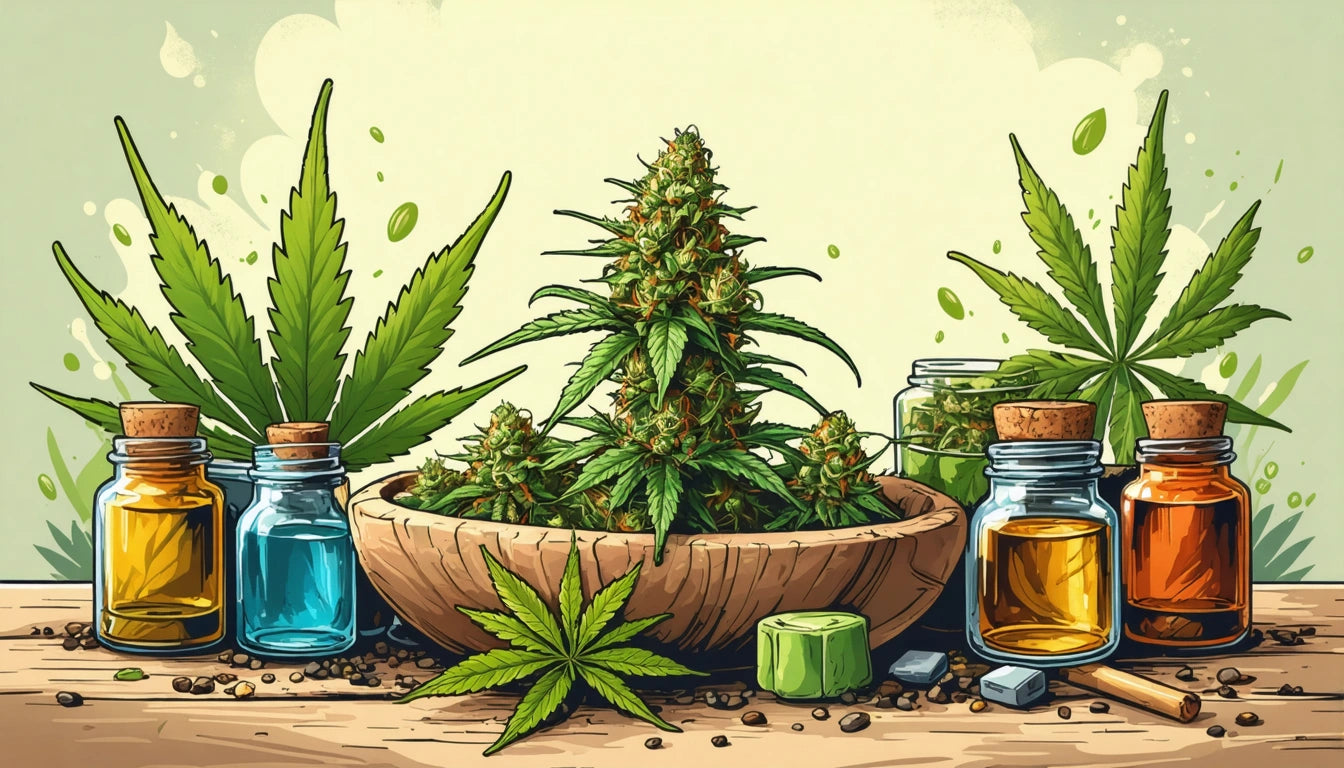Table of Contents
The Benefits and Process of Curing Marijuana Explained
After harvesting cannabis, many novice growers make the mistake of thinking their work is done. However, experienced cultivators understand that what happens after harvest significantly impacts the final product's quality. Curing marijuana is a critical post-harvest process that transforms raw cannabis into a refined product with improved potency, flavor, and smoothness.
What is Curing Weed? Understanding the Basics
Curing weed refers to the controlled drying and aging process that cannabis undergoes after the initial drying phase. While drying removes most of the moisture from freshly harvested buds, curing is a slower, more deliberate process that allows for chemical changes within the plant material. This process typically takes place in sealed containers over several weeks or months.
During curing, a series of chemical transformations occur as chlorophyll breaks down and beneficial compounds develop. According to cannabis terminology experts, proper curing is what separates premium cannabis from mediocre products.
Benefits of Curing: What Does Curing Do to Weed?
Enhanced Flavor Profile
One of the most noticeable improvements from proper curing is flavor enhancement. The breakdown of chlorophyll and plant sugars eliminates the harsh, grassy taste often found in uncured cannabis. This allows the natural terpenes to shine through, creating a smoother, more complex flavor profile.
Increased Potency
What does curing weed mean for potency? During the curing process, certain cannabinoid precursors convert to active forms. This natural conversion can increase the availability of THC, CBD, and other cannabinoids, potentially enhancing the overall potency and effect profile of the cannabis, as detailed in this resource on marijuana effects.
Smoother Smoke
Properly cured cannabis produces a noticeably smoother smoke or vapor. The breakdown of chlorophyll and other compounds that cause harshness and irritation results in a more enjoyable consumption experience with less coughing and throat irritation. This can be particularly important for medical users, as outlined in this overview of medicinal weed benefits.
The Curing Process: Step-by-Step Guide
- Initial Drying: Before curing begins, cannabis must be properly dried until stems snap rather than bend.
- Container Selection: Transfer buds to airtight glass jars, filling them about 75% full.
- Burping: Open containers daily for the first week to release moisture and gases.
- Monitoring: Check for mold or unusual odors during each opening.
- Extended Curing: Continue the process for at least 2-4 weeks, though many connoisseurs cure for 6-8 weeks or longer.
For a more detailed breakdown of this process, our ultimate guide to properly curing weed at home provides comprehensive instructions.
Common Mistakes to Avoid When Curing Cannabis
Even experienced growers can make errors during the curing process. Common mistakes include:
- Rushing the initial drying phase
- Using improper containers (plastic can affect flavor)
- Forgetting to burp jars regularly
- Storing in environments with fluctuating temperatures
- Exposing curing cannabis to direct light
Avoiding these pitfalls will help ensure your curing process yields the best possible results.
Proper Storage Solutions for Cured Cannabis
Once properly cured, cannabis should be stored correctly to maintain its quality. Glass jars with airtight seals are ideal, and for those with children in the home, specialized containers with child-resistant lids provide both quality preservation and necessary safety.
Storage considerations should include:
- Temperature control (60-70 °F is ideal)
- Humidity management (58-62% RH)
- Protection from light
- Air-tight sealing
Understanding cannabis terminology and types can help you determine the optimal storage conditions for specific strains.
Maximizing Cannabis Quality Through Advanced Curing Techniques
Beyond the basic curing process, advanced cultivators employ various techniques to further enhance their product. These include controlled humidity curing using humidity packs, extended curing periods of 6+ months for premium products, and specialized curing environments with precise temperature and humidity control.
The science behind what curing weed means for chemical composition continues to evolve as research expands. Some cultivators are experimenting with techniques borrowed from tobacco and wine aging to create unique, artisanal cannabis products with distinctive flavor profiles.
Whether you're a home grower or commercial producer, understanding and implementing proper curing techniques is essential for producing high-quality cannabis. The time and attention invested in this final stage of production yield significant returns in terms of user experience and product value.











Leave a comment
All comments are moderated before being published.
This site is protected by hCaptcha and the hCaptcha Privacy Policy and Terms of Service apply.